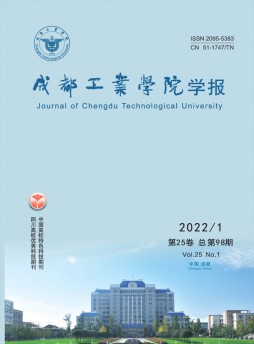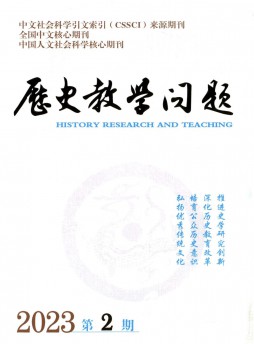本科毕业论文英文范文
前言:我们精心挑选了数篇优质本科毕业论文英文文章,供您阅读参考。期待这些文章能为您带来启发,助您在写作的道路上更上一层楼。

第1篇
一、英文摘要的特点及规范
1、具有独立性和自含性
对于一些英文读者来说,英文摘要是他们唯一的信息源,所以英文摘要一定要强调完整性,也就是说它所提供的信息必须是完整的。
2、具有定量分析
撰写英文摘要的过程中应该注意避免笼统的、空洞的阐述,尽量用具体的语言和清晰地思路来论述,这样能给读者一个全面的信息呈现。
3、具有创新性
由于东西方文化差异,西方学者在阅读论文时会注重创新之处,所以中英文摘要不必强求一致,英文摘要需要有自己的特点和风格。
国际标准规定中“摘要”一词定义为原文内容准确、扼要的表达,而不加以解释和评论。各个高校对其也都有自己的相关规定,如新疆农业大学,一般要求英文摘要在200-250字符,单词语法正确,语言流畅、精炼。内容包括目的、方法、结果、結论等4个方面,着重反映论文中的新内容、新见解,但不得加入评论。
1、研究过程简述
为了了解本校非英专本科毕业论文英文摘要所存在的问题,笔者进行了两方面的研究。笔者对土管专业的62份问卷结果进行了数据分析,发现77%的非英专学生对英文摘要有强烈的需求;收集了土管专业的57份毕业论文英文摘要,进行详细分析、研究,发现70%的学生借助了网上一些软件翻译,其中有25%的人对译文进行了修改,仅有12%的学生基本了达到英文摘要的要求。
2、英文摘要存在的问题的分析
1)文章题目的翻译。中国学生受到汉语思维习惯的影响,在中文题目中会用到“研究”、“初探”等词,但是在撰写英文摘要中,这些词就可以不用译出。
例如:四平市耕地保护的问题及对策分析
原译:Analysis of Problem and Countermeasures of Farmland Protection in Si Ping City
改译:Problem and Countermeasures of Farmland Protection in Si Ping City
2)标点符号错误。学生常犯的错误:并列成分用分号隔开;书名号没有用斜体;中英文省略号的区别。
例如:农户耕地流转行为受农户文化程度、年龄、农户家庭劳动力资源状况影响。
译文:... is influenced by farmers’ degree of education,age,labor resource status.
3)用词不当。词性和近义词区别分辨不清常会导致用词不当的问题。
例如:但是由此产生的人地矛盾问题却日趋尖锐
原译;but the resulting contradiction between people and land ...
笔者认为“矛盾”一词,根据词义和用途,conflict更为贴切。
改译:but the resulting conflict between people and land...
4)搭配不当。英语单词的搭配纷乱复杂,许多学生的语法基础薄弱,经常会用错搭配导致不规范的表达。
例如:In Urumqi as an example ...
改译:Taking Urumqi as an example...
5)中式翻译
做翻译时,一个普遍问题就是中式思维翻译。如果只顾字面对应,不考虑文化差异,可能会造成简单句泛滥,句子衔接性差。
例如:大量的农业用地转为城市用地,给国家粮食安全问题和生态环境的保护造成了极大的压力。
原译:A great deal transformation of agricultural land into urban land, to the national food security problems and the protection of the ecological environment cause great pressure.
原译文完全是根据中文逐字逐句翻译的,且原文中的“问题”可不用译出。
改译:A great deal transformation ...brings great pressure to the national food security...
三、改进英文摘要质量的对策
英文摘要中存在的问题还有很多,以上几条只是笔者在实践过程中常见问题的简单总结。想要提高摘要质量,笔者认为需要从以下两个方面做出努力:
正确认识英文摘要的意义,了解英文摘要的写作特点和规范。撰写英文摘要时,先用中文完成结构完整、信息全面的摘要,再按照英文思维将其翻译下来。
掌握英文摘要的翻译技巧,加强自身翻译能力。多注重英文摘要的写作规范和行文特点,如用词、句法、时态、语态等。多积累英文摘要常用词、句型,多阅读英文文献资料。(作者单位:新疆农业大学外国语学院)
作者简介:汪南(1994~),新疆农业大学外国语学院英语134班学生。
参考文献
[1]陈晓文,王晓农.非英专本科生毕业论文中文摘要英译研究—以鲁东大学2010届非英专部分毕业生为例[J].河北联合大学学报(社科版),2012年(1).
第2篇
【关键词】非英语专业;本科生毕业论文;摘要;翻译;对策
毕业论文的质量是反映大学生学习效果与专业素质的一项重要指标。随着各个领域的国际交流与合作日益增多,我国对外科技交流日益频繁,论文尤其是论文摘要的撰写与翻译引起了人们高度重视,对论文摘要翻译的关注度也越来越高,同时“论文摘要的格式和结构都趋于格式化”。[1](P157)然而值得注意的是,由于种种原因,如相当一部分毕业生在撰写毕业论文时已不再系统英语学习,日常英语教学中教师缺乏这方面的指导和训练等,目前许多毕业论文英文摘要还存在某些缺陷与问题。
本文以非英语专业本科生毕业论文摘要的英译为研究对象,通过问卷调查、摘要译文搜集、文本细读,分析总结翻译中的常见错误,结合问卷结果,提出提高翻译水平的有益建议。
1 现状
在百度搜索引擎中输入“毕业论文摘要翻译”,可找到超过200万个结果,其中绝大多数或是论文摘要翻译求助或是提供论文摘要翻译服务的。这一现象说明尽管大学本科毕业生已经进行了至少十年的英语系统学习,但在具体应用尤其是论文摘要翻译上,仍然需要进一步的训练和指导。
笔者对天津城建大学150名非英语专业大三、大四的学生进行问卷调查,内容主要包括学生对未来毕业论文英文摘要翻译的预期等相关问题,同时涉及大学英语、专业英语课程的反馈。
从调查问卷中反馈的主要信息有:绝大多数学生(84.90%)会重视毕业论文摘要的英译,然而有超过六成(60.37%)的学生认为自己难以独立完成这项工作,因此大部分学生(75.74%)认为有必要专门针对毕业论文摘要的英译进行指导。在谈到具体面临的困难时,居前三位的分别是专业词汇量不够(84.90%)、缺乏翻译技巧(62.26%)、对科技英语特点了解不够(52.83%)。学生在翻译过程中所采取的翻译方法中,通过网络或翻译软件进行翻译的最多(75.46%)。尽管有近一半的学生(45.28%)认为个人利用各种词典进行翻译最为可靠,但只有两成左右(20.75%)会采用该种方法。
2 毕业论文摘要翻译中的主要问题
笔者搜集了近百份非英语专业本科生毕业论文摘要的英译,对其中存在的翻译问题进行归纳总结,主要问题与以下三个方面相关:
2.1 逐词翻译导致大量中式英语的存在
由于没有意识到英汉两种语言的基本差异,部分学生在翻译时基本采取逐词翻译的方式,甚至不考虑句子结构,将汉语的标点符号也原封不动地译到英语中来,造成大量不符合句法的“英文”句子,使读者很难理解要表达的内容。
例1:本文论述了我国村镇的基本概况和基本特点,研究了国内外物业管理的发展现状及村镇实施物业管理与构建和谐社区的关系。
译:This dissertation analyzes our country’s villages and small towns’ basic survey and the essential feature, and investigates the domestic and foreign estate management development present situation and the villages and small town’s estate management implementation and the construction harmonious community’s relations.
析:由于在翻译时没有考虑英语的句子结构,而是直接从汉语进行翻译,造成了诸多错误或者不当之处。原文中的“我国”在英语中直译成“our country”显然不妥;“构建和谐社区的关系”也直接按照汉语词汇的排列顺序译成“the construction harmonious community’s relations”,而没有考虑到短语中的动宾关系。
例2:但是市场比较法评估由于主观因素的不确定性的影响造成了它存在着不同的精确性问题。
译:But the market comparison test appraised because the subjective factor not definite influence created him to have the different accurate problem.
析:该句的翻译几乎没有一处是正确的,完全是逐字翻译,并且丝毫没有考虑到英文的语法和句法,句中多个词的词性也出现错误,可以说该句已经没有修改的意义,只有重新翻译。
2.2 对词语的确切含义与用法不清楚,导致用词错误
背单词是大多数学生在英语学习过程中花时间最多的一项工作,对于很多学生来说,复习准备英语考试就意味着背英文单词而已。然而尽管这样,只从毕业论文摘要的翻译来看,背单词却是一项收效却甚微的工作。主要原因之一是学生往往只注意到英文单词所对应的汉语意思,却没有注意到词汇的具体用法,没有将单词放到具体语境中,从而导致拼写以及词义较为接近的词的混淆。如architecture与building两个词,前者与“建筑学”有关,而后者是指“建筑物”,有些学生只了解两个词都是“建筑”的意思,因此在翻译中造成误用。另外,由于在背单词过程中过分关注其汉语词义,没有注意到词性,也导致在翻译过程中出现用词错误。
例1:(工业企业)技术创新
译:technique innovation
析:此处学生将technology与technique两个词混淆起来,没有弄清两个词的区别。technology指科学技术,而technique通常是指技巧或者某种手法。此处的“技术创新”显然是以科学发展为基础,而不在于提高技巧或手法。另外此处学生没有注意到应该用形容词,而不是名词。因此该短语应译为“technical innovation”。
例2:本文介绍了……
译:This paper introduction…
例3:经营战略
译:operating strategic
析:这两个翻译中都出现词性错误,名词“introduction”被误作动词使用,而形容词“strategic”被误作名词使用。
2.3 对英语句子的要求不明确导致大量不断句错误的出现
汉语的语法,有些地方是与英语相似的,但不同的地方更多。汉语并没有对句子结构或成分非常明确的规定,而英语对句子则有严格的规定。句子总的说来由两部分构成,即主语(subject)与谓语(predicate)。[2](P3)同时,英语句子以大写字母开头,以句号(问号、感叹号)结束。当学生受到汉语影响较深而没有严格按照英语句子的规范翻译时,很容易出现不断句的错误。
例:工程的生命在于质量,造成工程的质量问题有很多方面的因素,但它的核心是管理。
译:Quality is the life of architectural engineering, there are some factors in causing the poor quality of engineering, but wecan see the most importance is the management.
析:译文为了完全对照汉语原文的结构,用逗号连接“Quality is the life of architectural engineering”与“there are some factors in causing the poor quality of engineering”两部分。然而根据英语语法,两部分分别包括主语和谓语,是两个独立完整的句子,要以句号结束,不能用逗号连接,如果使用逗号的话则必须与连词共同使用。
3 提高学生毕业论文摘要翻译水平的几条对策
针对如上分析,笔者认为提高非英语专业本科生毕业论文摘要的翻译水平应注意以下几个方面。
3.1 强化大学英语课程的教学,适当调整教学内容
通过问卷调查可以看出,学生对英语学习的积极性很高,但对大学英语课的认可度较低,在受调查的学生中,有超过一半(50.94%)认为在大学英语课上的收获比较小,主要原因在于学生认为大学英语教学的实用性较差。因此,大学英语教师应在完成传统教学内容的基础上,学习了解一些学生相关专业词汇与习惯的表达,以适当方式渗透到教学中去,使学生对本专业知识的英语表达能力形成一定的基础。同时,教师可布置与学生水平相符的专业英语文章作为课后阅读作业,让学生提前接触相关领域的英语,通过阅读培养学生的语感,从而帮助他们提高汉英翻译水平。
3.2 专业英语课上加强英语语法的教学
“专业英语是大学英语教学的一个重要组成部分,是促进学生完成从学习过渡到实际应用的有效途径。”[3](P10)但与大学英语相比,学生专业英语课程的满意度略低一些,有54.71%的学生认为帮助不大。究其原因,一方面在于专业英语课时相对较少,另一方面也与课程的教学内容有关。
“专业英语语法和专业词汇是阅读和翻译的核心。”[4](P12)从目前情况来看,专业词汇的教与学得到了较高程度的重视,但语法教学显然受到了忽视,通常教师和学生认为英语语法已经在中学英语课和大学英语课上学习过,没有什么可再多讲、多学的,而且语法的教学枯燥无味。但根据笔者的教学经验和样本分析,因对英语(尤其是科技英语)的语法特点不了解而造成的翻译错误远多于因没有掌握专业词汇而犯的错误。
3.3 开设专门课程对学生进行辅导
在受调查学生中,有75.74%认为在大学英语和专业英语课之外,还需要对毕业论文摘要翻译进行专门指导。另外,虽然绝大多数学生认为专业词汇量不够是影响毕业论文摘要翻译的首要因素,但从实际翻译文本的分析来看,对汉英两种语言之间的差异的忽视以及对学术英语(尤其是科技英语)特点的不了解才是主要问题。据此,有必要开设类似《毕业论文摘要翻译》的选修课,消除学生针对毕业论文摘要翻译的误区,较为系统地讲授学术英语的特点与翻译。
【参考文献】
[1]张全,黄琼英.简明应用翻译教程[M].昆明:云南大学出版社,2010.
[2]张道真.英语实用语法[M].北京:首都师范大学出版社,2011.
第3篇
论文致谢一:
Thecompletionofthethesisisattributedtomanypeople'ssupportandencouragement.
Firstandforemost,Iwanttoextendmyheartfeltgratitudetomysupervisor,ProfessorCaoDaogen,whosepatientguidance,valuablesuggestionsandconstantencouragementmakemesuccessfullycompletethisthesis.Hisconscientiousacademicspiritandmodest,open-mindedpersonalityinspiremebothinacademicstudyanddailylife.Hegivesmemuchhelpandadviceduringthewholeprocessofmywriting,whichhasmademyaccomplishmentspossible.
Also,Iwouldliketoexpressmysinceregratitudetoalltheprofessorswhohavetaughtmeinthisuniversity.Theirinstructionshavehelpedbroadenmyhorizonandtheirenlighteningteachinghasprovidedmewithasolidfoundationtoaccomplishthispaperandwillalwaysbeofgreatvalueformyfuturecareerandacademicresearch.
Mythanksalsogototheauthorswhosebooksandarticleshavegivenmeinspirationinthewritingofthispaper.
Lastbutnotleast,Iwouldliketoexpressmyspecialthankstomyparents,whosecareandsupportmotivatemetomoveonandmakemewanttobeabetterperson.
论文致谢二:
Uponfinishingthisthesis,Iwouldliketoexpressmygreatgratitudetowardsallthosewhohaveofferedmesincereassistanceinthethreeyears.
Firstandforemost,myheartythanksgotomysupervisor,ProfessorZhangRuwen,whohasgivenmeinsightfulsuggestionsandconstantencouragementbothinmystudyandinmylife.Furthermore,ProfessorZhang'spainstakingteachingandvaluableadvicehaveprofoundlycontributedtothecompletionofthepresentthesis.
Also,Iownmythankstoalltheprofessorswhohavetaughtandenlighteningmeduringmystudiesinthecampus,forguidingmeinthefieldofresearchwork,whichisbothchallengingandfantastic.TheexperienceandprofitIobtainedwillbeofgrandimportancetomyfurtherstudies.
Finally,Iamalsogratefultomyfamilyandfriends,whoencourageandsupportmeandsharewithmemyworries,frustrations,andhappiness.
论文致谢三:
Iwouldlikeexpressmygratitudetoallthosewhooffergreathelpformythesis.
Firstandforemost,mydeepestgratitudegoestomysupervisorProfessorYuMuhong,forhisfather-likeencouragementandguidance.Heprovidedmewithabundantsuggestionsandpricelesscriticismsformywritingofthethesis.Butforhisconstantpatientguidanceandenlightenment,thethesiswouldhavebecomeamissionimpossible.
MysincerethanksalsogototheteachersfromtheSchoolofForeignLanguagesofZhejiangUniversityofFinanceandEconomics,whojointlyledmeintotheholytempleofacademicfield.Here,IwanttosendmygratefulnesstothoserespectedteacherslikeProf.WangBaorong,Prof.LiChangbao,Prof.ChenXianghong,Prof.ShaoYouxue,Prof.TengChao,Prof.CenQunxiaetc.Thankyouforyourbeingwithmeandbeingthewitnessesforthebirth,growthandperfectionofmythesis.
Ifeelindebtedtomyparents,withouttheirmentalandmaterialsupport,Icouldbarelyfinishthethesisontime.
Finally,mythanksshouldbesenttoallmyclassmates,fortheirendlesssupportandwarmhearts,makingmefeellikelivinginaunitedbigfamily.
论文致谢四:
Thecompletionofthethesisisattributedtomanypeople'ssupportandencouragement.
Firstandforemost,Iwanttoextendmyheartfeltgratitudetomysupervisor,ProfessorCaoDaogen,whosepatientguidance,valuablesuggestionsandconstantencouragementmakemesuccessfullycompletethisthesis.Hisconscientiousacademicspiritandmodest,open-mindedpersonalityinspiremebothinacademicstudyanddailylife.Hegivesmemuchhelpandadviceduringthewholeprocessofmywriting,whichhasmademyaccomplishmentspossible.
Also,Iwouldliketoexpressmysinceregratitudetoalltheprofessorswhohavetaughtmeinthisuniversity.Theirinstructionshavehelpedbroadenmyhorizonandtheirenlighteningteachinghasprovidedmewithasolidfoundationtoaccomplishthispaperandwillalwaysbeofgreatvalueformyfuturecareerandacademicresearch.
Mythanksalsogototheauthorswhosebooksandarticleshavegivenmeinspirationinthewritingofthispaper.
Lastbutnotleast,Iwouldliketoexpressmyspecialthankstomyparents,whosecareandsupportmotivatemetomoveonandmakemewanttobeabetterperson.
论文致谢五:
Uponfinishingthisthesis,Iwouldliketoexpressmygreatgratitudetowardsallthosewhohaveofferedmesincereassistanceinthethreeyears.
Firstandforemost,myheartythanksgotomysupervisor,ProfessorZhangRuwen,whohasgivenmeinsightfulsuggestionsandconstantencouragementbothinmystudyandinmylife.Furthermore,ProfessorZhang'spainstakingteachingandvaluableadvicehaveprofoundlycontributedtothecompletionofthepresentthesis.
Also,Iownmythankstoalltheprofessorswhohavetaughtandenlighteningmeduringmystudiesinthecampus,forguidingmeinthefieldofresearchwork,whichisbothchallengingandfantastic.TheexperienceandprofitIobtainedwillbeofgrandimportancetomyfurtherstudies.
Finally,Iamalsogratefultomyfamilyandfriends,whoencourageandsupportmeandsharewithmemyworries,frustrations,andhappiness.
论文致谢六:
Iwouldlikeexpressmygratitudetoallthosewhooffergreathelpformythesis.
Firstandforemost,mydeepestgratitudegoestomysupervisorProfessorYuMuhong,forhisfather-likeencouragementandguidance.Heprovidedmewithabundantsuggestionsandpricelesscriticismsformywritingofthethesis.Butforhisconstantpatientguidanceandenlightenment,thethesiswouldhavebecomeamissionimpossible.
MysincerethanksalsogototheteachersfromtheSchoolofForeignLanguagesofZhejiangUniversityofFinanceandEconomics,whojointlyledmeintotheholytempleofacademicfield.Here,IwanttosendmygratefulnesstothoserespectedteacherslikeProf.WangBaorong,Prof.LiChangbao,Prof.ChenXianghong,Prof.ShaoYouxue,Prof.TengChao,Prof.CenQunxiaetc.Thankyouforyourbeingwithmeandbeingthewitnessesforthebirth,growthandperfectionofmythesis.



